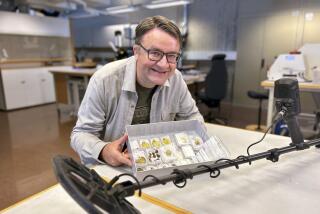Oil-Fueled Spending Spree Is Over : Business Booms for Norway Junk Shops
- Share via
OSLO — A slumping economy is sending Norwegians on bargain hunts in junk shops and second-hand stores.
When North Sea oil wealth flowed, Norwegians spent freely in an economy that quickly became overheated, but the boom came to an abrupt end two years ago when oil prices plunged.
“Business is booming,” said Leon Andersen, who runs a Salvation Army shop in the city of Stavanger. “It’s better than ever. So far this year, sales are up 30% compared to last year.
“People come here looking for everything from used clothes to furniture. They’re being more careful with their money.
“We just may run out of used merchandise. People seem to be holding onto their things. They make do with an old couch for another year or use an old dress another season.”
Entire Country Squeezed
Stavanger, the nation’s oil capital on the west coast, was hardest hit by the collapse of oil prices in 1986, but the drop in national income has squeezed the entire country.
With its offshore oil fields pumping 1.44 million barrels a day, lower crude prices quickly chilled Norway’s overheated economy.
Tough measures, including legislated wage controls, have helped reduce inflation and the trade deficit. But unemployment doubled in the last year to 4%, the highest since the 1930s, and thousands of businesses went broke.
The government decisions, combined with a modest recovery of oil prices, hold out promise for the future, but it may take time before it is felt in the household budget.
“Many Norwegians may be willing to lower their standards a little compared to 1986,” said Oddbjoern Eiden, an economist for the Confederation of Norwegian Business and Industry.
Consumer Spending Drop
He said consumer spending declined 1.6% in 1988 after dropping 2.7% in 1987. In 1986, the peak of the oil boom and spending spiral, consumption leaped 5.7%.
“It’s hard to say why people would buy more used merchandise,” said Oddbjoern Knutsen of the state Institude of Social Research. He said it was possible that Norwegians were simply returning to a normal state of affairs.
“I don’t think the spending spree of mid-1980s was typical. Oil resulted in an economic growth that was without equal in the West. And people spent money freely,” he said.
“It’s more typical of Norwegians to be careful with money. If they are indeed buying more used things and not discarding as much, then it seems we are returning to the cautious ways of the 1950s and 1960s, when Norway was not a rich nation.”
Arne Johansen, who works for Oslo’s five-store Elevator thrift shops, said he noticed an upswing in sales just after the economic slump began.
“We haven’t noticed much of an increase since 1987 at any of our stores individually. Sales are pretty stable. But a lot more used merchandise shops have opened in Oslo during the past year or two,” he said.
“Business is up,” said Willy Olsen, who has owned Oslo’s Willy’s Used Merchandise for 22 years. “But a lot of new stores have opened. There must be 10 that opened in the past two years.”
Twenty-nine thrift shops are listed in the telephone book for Oslo, a city of 425,000.
More to Read
Inside the business of entertainment
The Wide Shot brings you news, analysis and insights on everything from streaming wars to production — and what it all means for the future.
You may occasionally receive promotional content from the Los Angeles Times.










